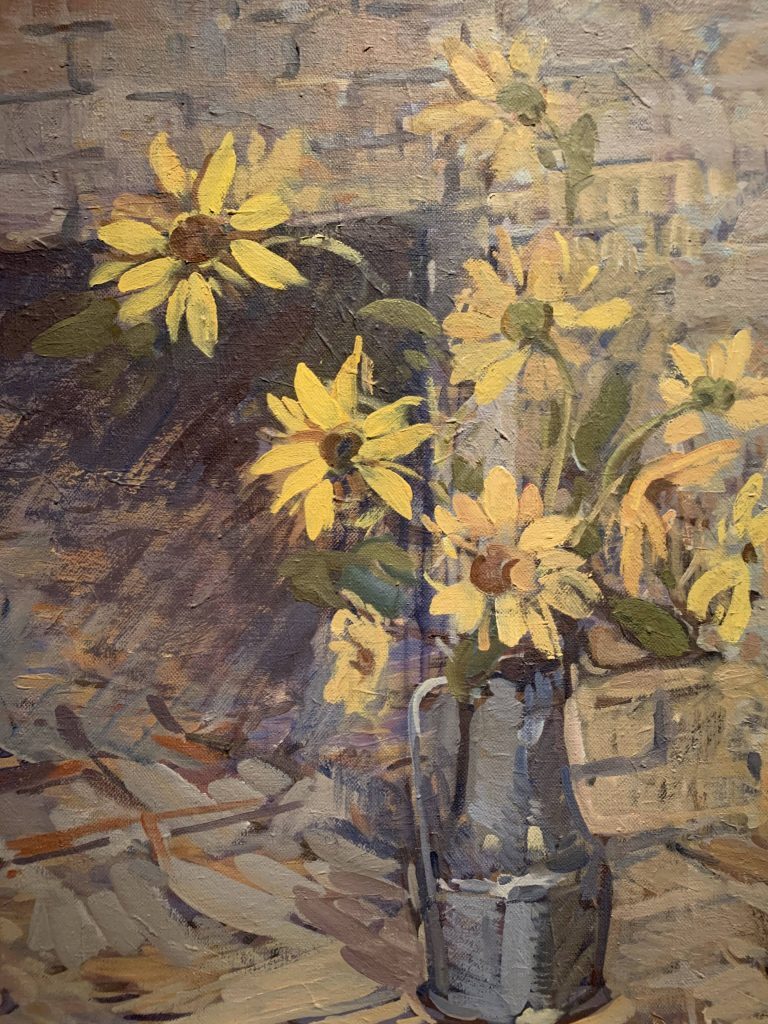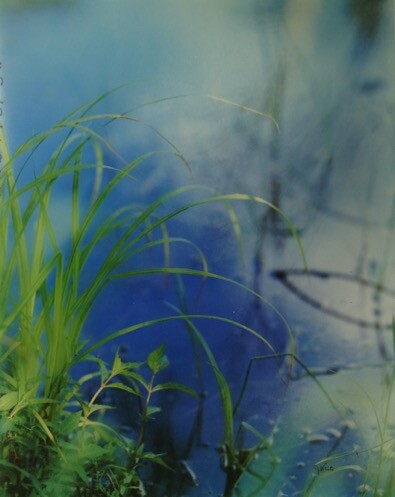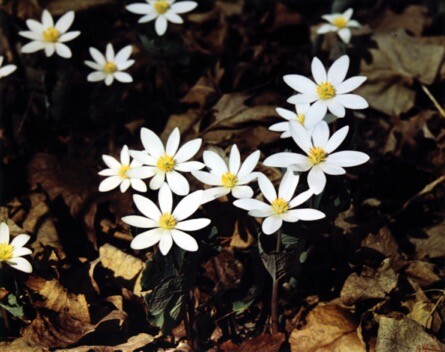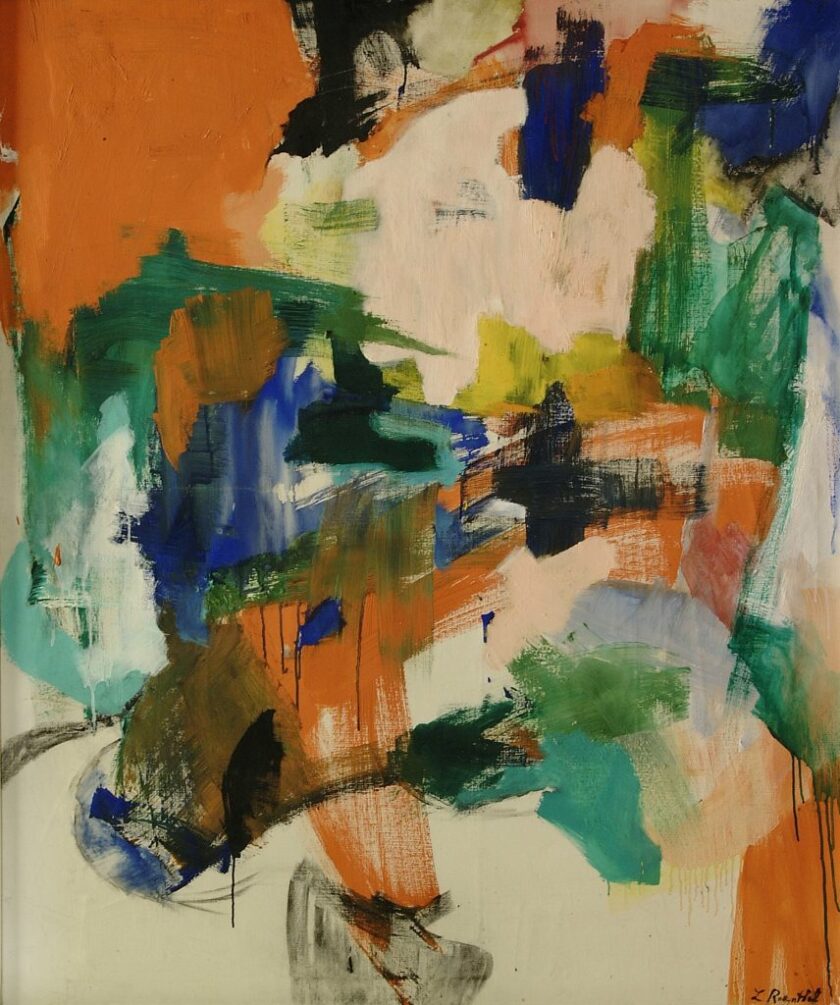STILL LIFE & BEYOND
I paint flowers so they will not die.
Fresh cut flowers. Pieces of colorful fruit. Shiny vases. Artists have been depicting them for centuries; artwork that portrays inanimate objects (such as food, flowers, shells, rocks, coins, and books) is referred to as a still life. Long viewed as a lesser art form, still life painting particularly appealed to female artists. Women were denied access to official art academies, unable to study from live models, and therefore not trained to create larger, monumental scale paintings. Additionally, for many female artists, demands of the home and family prevented them from serious study of the arts. Undeterred, women excelled in painting floral arrangements and still lifes. This strong relationship to still life continued into the twentieth century. In the BYU Museum collection, the majority of the works by women are still life paintings, photographs, and prints. This reinforces the idea that still life has often been the most accessible for women artists as well as the most socially acceptable. As we admire this works in this gallery, let us applaud their dedication to art despite considerable obstacles and look particularly for ways that they have cleverly pushed the still life genre in new directions.

Rose Hartwell (1861-1917), 'Still Life,' No Date, Oil on Canvas, 15 x 19 15/16 Inches. Brigham Young University Museum of Art.
“In Paris and Florence, I am more at home than Salt Lake City. To me, travel seems as necessary to one’s education as books.”
As one of the first generation of Utah women painters to study in Paris, Hartwell was an inspiration to her Utah community of friends, family, and associates, who were very interested in her experiences abroad. Her letters home were published in the Young Woman’s Journal and detailed the strict demands of art-student life. For the first two years, she worked primarily on drawing, spending everyday in the studio from eight in the morning until five at night, only taking Saturday afternoons off to visit museums and galleries. As a result of her diligent efforts, she excelled at her still life scenes, such as this richly colored work with ripe oranges and browning bananas.
While in Europe, Hartwell travelled extensively and developed a strong colorist technique. She returned to the United States in 1913, just a few years before her death in 1917.

Flora D. Fisher (1891-1984), 'Bouquet,' No date, Oil on Masonite, 24 x 30 Inches. Brigham Young University Museum of Art.
Flora Davis Fisher, of Provo, studied art at Brigham Young University, particularly focusing on watercolor and oil painting. Fisher became known for her color-filled landscapes and flower paintings, such as Bouquet.
The brown basket with a chevron design and the woven material underneath give this still life a comfortable, homey feel. The red blossoms fill the composition and the bright blue and green background is energetic and inviting. Unconfined, the bouquet organically spills out of the basket for a natural composition.

Lorraine Jennings, 'Still Life,' 1942, Watercolor, 13 3/16 x 11 9/16 Inches. Brigham Young University Museum of Art, 1942.
Georgia O’Keeffe once lamented, “Nobody sees a flower really; it is so small. We haven’t time, and to see takes time—like to have a friend takes time.” Still life paintings invite us to slow down and look at flowers, vases, fruit, and other quotidian objects with new eyes. In this piece, Jennings uses two contrasting ceramic vases, of different sizes and colors, two fruits, and budding branches, to invite our examination of light, colors, shapes, and reflections. On the back, in very light graphite, she drew a preliminary study for this watercolor.

Dorothy Weir Young (1890-1947), 'Vase of Wild Flowers,' No Date, Watercolor, 11 9/16 x 9 Inches. Brigham Young University Museum of Art, Purchase and Gift of the Mahonri M. Young Estate, 1959.
Raised in a household that embraced the arts, Young showed artistic promise from a very early age. Her family reported that she began her creative efforts when she was just two years old. The young Dorothy studied under her artist father and kept sketchbooks that imitated his observations of the world. As she matured, Young became more independent and received formal training at the Art Students League and the National Academy of Design. This undated watercolor still life shows a vase of flowers and a stack of books. The bright yellow and white of the wild flowers enlivens the dark background, and the reflections on the vase suggest the windows and light of her studio space.

Jeanne Leighton-Lundberg Clarke (1925-2014), 'Trifloria,' 1981, Oil on Canvas, 54 x 48 1/2 Inches. Brigham Young University Museum of Art, 1981.
Purple irises, yellow daffodils, green grapes, and red cherries are just the beginning of the list of fruits, flowers, and patterns that each compete for our attention in this cheerful but complicated painting. The dizzying complexity of objects almost completely overshadows the three women sitting around the table. The artist seems to subtly ask us: are we periodically distracted by objects, however beautiful and fulfilling, from the people on the periphery?
A vibrant woman with a sharp intellect and lively sense of humor, Clarke dedicated her life to the arts, creating colorful symbolic paintings. Deeply religious, Clarke studied various Christians faiths, eventually relocating with her family to Provo after becoming members of The Church of Jesus Christ of Latter-day Saints. Digging again into her studies after 30 years, she enrolled to BYU at the age of 49, receiving both a Bachelors and a Masters degree in Fine Arts. She taught watercolor and oil painting at BYU and UVU.

Dorothy Weir Young (1890-1947), 'Flower Still Life,' 1930, Oil on Canvas, 61 x 18 1/4 Inches. Brigham Young University Museum of Art, Purchase and Gift of the Mahonri M. Young Estate, 1959.
In 1917, Young attended Storrs College to study gardening. Although she found that horticulture did not interest her as much as painting and she left after one week, the subject matter of flowers was endlessly interesting to her as an artist. She produced hundreds of floral still lifes, paying close attention to detail, color, and composition. Young’s technical skill is evident here in the clear glass vase, the light reflections, the varied textures of the flowers, and the creases on the white cloth underneath the floral arrangement.
Her artwork has been exhibited at the National Academy of Design, the Pennsylvania Academy, and the Brooklyn Museum.

Ella Peacock (1905-1999), 'Daisies in Pewter Pitcher,' C. 1986, Oil on Canvas, 19 1/4 x 16 1/8 Inches. Brigham Young University Museum of Art, Purchase and Gift of the Mahonri M. Young Estate, 1959.
This simple painting of flowers in a pitcher is characteristic of Peacock’s signature artistic style. Both the color palette and the subject matter reflect her interests. The daisies, imperfect and asymmetrical, reveal her preference for wild, untamed nature while the warm tones of the flower petals and the brick balance out the soft blue-gray tones of the metal pitcher and shadows. With muted colors, this painting mirrors the desert landscapes that Peacock depicted throughout her life. Thick, painterly brushstrokes add a sense of immediacy and casualness to the still composition. Around the edges of the canvas and behind the pitcher, Peacock’s lines become less defined and colors harmoniously blend together.


Jeannette Klute (1918-2009), 'Bloodroot,' 1950-1960, Dye Transfer Color Photograph, 14 3/4 x 18 1/2 Inches. Brigham Young University Museum of Art, Gift of Michael and Joani Cannon, 2003.
A pioneer in the development of color photography, Jeannette Klute tested and developed the dye transfer process at the Eastman Kodak research laboratories. Klute specialized in detailed imagery of nature, ranging from lush landscapes to intimate “portraits” of flowers, ferns, and trees. This grouping of photographs shows three close-ups of the natural world that invite us to look again at the elegant lines of pond grasses, the pristine white petals of Bloodroot flowers, and a young fawn almost camouflaged against the fall leaves.

Jeannette Klute (1918-2009), 'Fawn (Close Up),' C. 1955, Dye Transfer Color Photograph, 15 1/8 x 18 15/16 Inches. Brigham Young University Museum of Art, Gift of Legrand P. Belnap, 2002.
A pioneer in the development of color photography, Jeannette Klute tested and developed the dye transfer process at the Eastman Kodak research laboratories. Klute specialized in detailed imagery of nature, ranging from lush landscapes to intimate “portraits” of flowers, ferns, and trees. This grouping of photographs shows three close-ups of the natural world that invite us to look again at the elegant lines of pond grasses, the pristine white petals of Bloodroot flowers, and a young fawn almost camouflaged against the fall leaves.

Jeannette Klute (1918-2009), 'Black-Eyed Susan,' C. 1955, Dye Transfer Color Photograph, 19 7/8 x 15 1/2 Inches. Brigham Young University Museum of Art, Gift of Legrand P. Belnap, 2002.
Klute paved the way for women to work in the photography industry. While working as the supervisor for Kodak’s Photographic Technology Studio, she primarily hired women to work as research photographers and technicians. She defended her decision saying that, “…it’s good to help prove to the world that women truly do have brains.”
Always drawn to the outdoors, Klute specialized in detailed imagery of nature, ranging from lush landscapes to intimate “portraits” of flowers, ferns, and trees. Her innovative approach to using color has made her a major player in the development of creative photography.

Jeannette Klute (1918-2009), 'Red Leave,' 1950-1960, Dye Transfer Color Photograph, 14 1/2 x 18 1/2 Inches. Brigham Young University Museum of Art, Gift of Michael and Joani Cannon, 2003.
Klute paved the way for women to work in the photography industry. While working as the supervisor for Kodak’s Photographic Technology Studio, she primarily hired women to work as research photographers and technicians. She defended her decision saying that, “…it’s good to help prove to the world that women truly do have brains.”
Always drawn to the outdoors, Klute specialized in detailed imagery of nature, ranging from lush landscapes to intimate “portraits” of flowers, ferns, and trees. Her innovative approach to using color has made her a major player in the development of creative photography.

Jeannette Klute (1918-2009), 'Woodland Portraits, Plate 50,' 1950-1960, Dye Transfer Color Photograph, 9 7/8 x 12 Inches. Brigham Young University Museum of Art, Gift of Michael and Joani Cannon, 2003.
Klute paved the way for women to work in the photography industry. While working as the supervisor for Kodak’s Photographic Technology Studio, she primarily hired women to work as research photographers and technicians. She defended her decision saying that, “…it’s good to help prove to the world that women truly do have brains.”
Always drawn to the outdoors, Klute specialized in detailed imagery of nature, ranging from lush landscapes to intimate “portraits” of flowers, ferns, and trees. Her innovative approach to using color has made her a major player in the development of creative photography.

Jeanne Leighton-Lundberg Clarke (1925-2014), 'Harmony in Blue,' 1990, Oil on Canvas, 39 3/4 x 47 1/2 Inches. Brigham Young University Museum of Art, Gift of Barbara J. Witherow, 2000.
Jeanne Leighton-Lundberg Clarke considered herself to be a “maximalist,” filling every inch of the canvas. For Clarke, the trend of minimalism was unable to capture the cluttered, and often busy, experience of being a woman. Richly patterned and with an overflowing floral centerpiece as the focal point, the table includes several seated figures who may be initially obscured or overlooked amidst the saturated canvas. The abundance of fruits and flowers serves as a reminder of the plentitude of good things that surround us.

Judith Mehr (B. 1951), 'Crimson Pears,' C. 1985, Oil on Linen, 26 1/2 x 34 9/16 Inches. Brigham Young University Museum of Art.
Six pears, ranging from deep crimson to slight splashes of red, are arranged next to a shiny golden bowl. Painted in sharp detail, this simple composition has an almost photographic quality that is characteristic of many of Judith Mehr’s still life paintings from this period. The softness of the light, the subtle shadows, and the reflections that bounce off the surfaces of the fruit and the sides of the bowl invites closer study. The countertop effortlessly merges into the back wall creating a spatial ambiguity that is more complex than might be initially supposed.
From San Francisco, California, Mehr grew up in the Bay area and began developing her artistic talents at an early age. Offered an art scholarship from Brigham Young University, Mehr received her BFA degree in 1974. After graduation, Mehr built a reputation for her portraiture and genre scenes. She has received numerous portrait commissions from the LDS church and other corporate and private clients in Utah.

Louise Rosenthal, 'Untitled,' No Date, Oil on Canvas, 49 15/16 x 41 5/8 Inches. Brigham Young University Museum of Art, 1974.
In a 1962 review of an exhibition of her work at Bodley Gallery in New York City, art critic Brian O’Doherty described Rosenthal’s large abstract canvases as “bright and aggressive in color, in which vivid stokes and shapes push against the canvas to create a great deal of visual excitement.”
Strongly influenced by Abstract Expressionism, Rosenthal’s thick brushstrokes make sweeping gestural marks across the canvas. his piece does not aim to depict a specific subject or narrative, but rather to focus on the expressive or emotional impact of the colors, the arrangement, and the process of painting itself. The spontaneity of the composition is seen where the paint starts to run out, leaving bristles marks across the canvas as if the painting was done quickly, in a moment of inspiration.

Lee Deffebach (1928-2005), 'Untitled (44/45),' 1993, Lithograph, 30 x 22 1/16 Inches. Brigham Young University Museum of Art, Purchased with Funds Provided by the BYU Art Department, 1994.
“My paintings solve no problem, they make no statement, there is no intrusion by them on the viewer. I work with color, shape and line until I find the painting comfortable to look on, to muse upon… ”
Lee Deffebach was an artistic force to be reckoned with, exhibiting in the 1950s and 60s with the likes of Kline and De Kooning. During this time, the artists in downtown New York City rejected the elitism of the uptown art scene, establishing instead a series of co-op galleries that were owned and operated by the artists themselves. These became known collectively as the 10th Street Galleries, a hub of creativity and experimental art forms. This lends considerable weight to the praise one critic placed on Deffebach’s work as “the best thing happening on10th Street.”
Deffebach graduated from the University of Utah in 1949, and later returned to teach at her alma mater in the 1960s. One of Utah’s leading abstract artists, Deffebach created colorful often large works, many of which can be found in many galleries and museums in Utah particularly in the Salt Lake area.

Marie Kratke, 'Still Life Roses & Eucalyptus,' C. 1930, Oil on Canvas, 28 7/8 x 20 Inches. Brigham Young University Museum of Art, Gift of A. Merlin Steed and Alice W. Steed Collection.
Placed in front of a simple, light brown background, pale roses with hints of pink blend with eucalyptus branches in a blue and white vase. The roses are no longer in full bloom and the heavy blossoms droop down. Wilting flowers could be a nod to vanitas paintings which warn of the fleeting nature of life and the impermanence of objects. The strong vertical line of the vase and eucalyptus leaves reaching upward counterbalances the downward pull from the drooping flowers. The vase sits on a polished brown tabletop which reflects the fallen petals and leaves scattered across it.

Ella Peacock (1905-1999), 'Letter Press,' C. 1950, Oil on Canvas, 20 1/4 x 24 1/2 Inches. Brigham Young University Museum of Art, 1987.
The solid heavy press, the jar of brushes, and the rolling ink brayer all represent tools that Peacock used daily to create her art. As both a printmaker and painter, Peacock relied upon these materials and also found them inspiring enough to paint. In this way, this piece stands simultaneously as both an unusual still life and a self-portrait of the artist. The small wood block resting on the desk looks carved and perhaps ready for printing.

Dorothy Weir Young (1890-1947), 'Sunflowers of Desert,' C. 1934, Oil on Canvas Board, 24 1/4 x 18 1/4 Inches. Brigham Young University Museum of Art. Purchased and Gift of the Mahonri M. Young Estate, 1959.
After Dorothy Weir’s marriage in 1931 to her longtime friend and fellow artist, Mahonri Young, the couple spent the majority of their time at the Weir family farm in Branchville, Connecticut. While there, she produced a number of works that reflect an attention and interest in her natural surroundings, including many floral still lifes. In this painting, Dorothy’s keen observational skills are evident in the way light and shadow fall across the different textures of the composition, from the soft petals of the sunflower to the polished table surface. The shapes of the flowers are softly echoed in the floral patterns of the wallpaper in the background.
Explore other sections of A Studio of Her Own: Women Artists from the Collection.
Landscapes: The World Around Us
Home & Scenes of Daily Life
Cities & Towns
Portraiture
Religious & Spiritual Art
Views of the Gallery